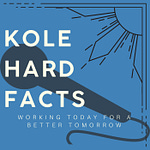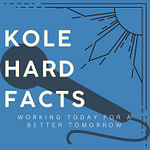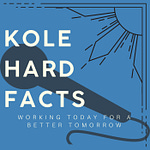In last week’s blog, Motivators vs Consequences, we showed a pre-pandemic list of what employees value. Since the pandemic, the needs for autonomy, work-life balance, and flexible scheduling have moved up the list in importance. As leaders we must always keep the goals & objectives of the company in sight. We are still accountable to investors, stakeholders, and the bottom line. Keeping employees engaged in this challenging environment is part of the equation.
As we enter this new world of hybrid work one of our readers posed a great question;
How should leaders balance the new needs of hybrid teams along with the organization’s goals & objectives? - Thank you Tom Ziglar.
If the name sounds familiar, he is the proud son of Zig Ziglar.
Statistics
The main point I was hoping to drive in last week’s article was to know what each team member's motivators are (know your PEOPLE). Whether it's autonomy or company benefits - we need to find out what makes them tick. As for the question of how to balance these new needs … this is going to be hard to tackle in the coming years. There are recent statistics released by the University of Chicago (10,000 professionals surveyed):
36% believe the office is best suited for individual work
32% said they would quit their job if they were not able to continue working remotely
Just these 2 stats alone show that we have some conflict brewing! The challenge in the future is balancing those. So now onto answering the question.
Supplier or Customer … we all have two roles
Over the years I have coached businesses on this concept: Everyone within the company is both a supplier and a customer. They are either providing (supplier) something to another colleague/group as an input or receiving (customer) that input so they can manage their tasks and responsibilities. A crucial component to building this balanced environment is to intimately understand what the process of your organization is in detail. To produce that widget or deliver a service there are dozens of interrelationships within your organization that rely on each other to deliver. In order to clearly define the process each supplier and customer needs to define what they can deliver and what they expect to receive.
Having spent the last 30+ years in production environments it is more obvious to see those relationships.
As an incoming goods inspector, you receive raw materials that meet this spec … if it’s okay it moves to the processing area
As the machine operator, you check the product for critical characteristics, and it if is okay you move it to the next step in the process and it continues.
In the background you have logistics people waiting for the product packaged in pre-defined cartons, accounting folks waiting to send out the invoice, and the CEO waiting to look at his updated P&L …
Each step in that process must be clear. Everyone has expectations and there should be no surprises.
Clear and Complete Expectations
This is where clear expectations need to be communicated and it is the responsibility of each team member or group to define their needs and wants:
If you are the customer it’s up to you to define what exactly you need, when you need it, and what conditions are required to be met for you
It’s also good practice to let the supplier know HOW you are using their input, and what it goes into so they see a bigger picture.
As the supplier, you define what is possible, what the capacity is, when and how it can be delivered, or what special steps it will take to meet the customer's expectations.
The supplier can also provide insight on how they develop these products or services so the customer has a better appreciation of that process as well.
Process is a key factor
Leadership must know the process from innovation to collecting the invoice and depositing the money in the bank. Once this entire process flow is understood, they can define; what, where, and when those team members need to work together. The process that creates the best product or service will determine when virtual or in person will work best for both the company and the team.
Every company will find its level. With COVID we learned there are a lot of things that CAN be managed from home and at 3 am. New tools have been created, and more experimentation was forced to take place. No one answer fits all companies. It could be 3-day a week at home, or everyone agrees that they work independently. Maybe they have to check in once a week in a team meeting in person … the process will define when the best times are.
Your checks and balances are that it must make sense to the company's goals and objectives.
We teach in our goal setting workshops the need to tie team members' goals to the companies somehow. Find out where there is a win: win without loss of efficiency or effectiveness. In the end, the company needs to make money, and employees need to be engaged. In a professional environment defining this process creates a company culture and accountability that is missing so often. It’s never going to be perfect, and there will be some give and take, however efficiency and effectiveness should continue to be priorities.
And of course, the paying customer should be on the top of the priority pyramid!
Every company boils down to 3 things that leaders need to focus on:
People - Product - Process …
Last week we spoke a about knowing your people, and what makes them tick. Today it’s the process. Product is yet another one of the three critical factors that a leader needs to understand in detail.
There is no specific order as they are all equally important. Identifying every relationship, workflow, input, and output, is critical to the future success of your organization. If you know these three variables inside and out you can tackle any type of future shock to your workforce.
Picking the correct team members that work in YOUR process flow is what is next!
If you are finding it hard to dig into these details give us a call at Kole Performance Group. We will work hard today, for a better tomorrow!















Listen: Balancing the needs of the organization and team in the post-pandemic era